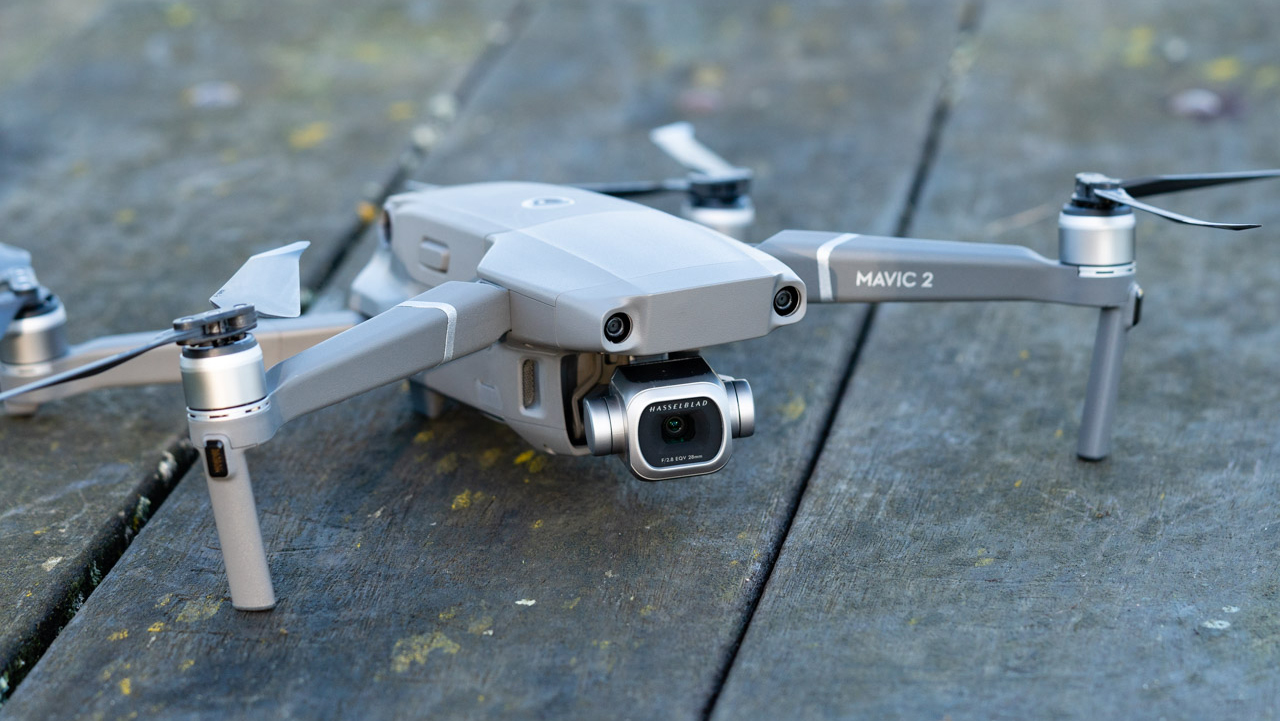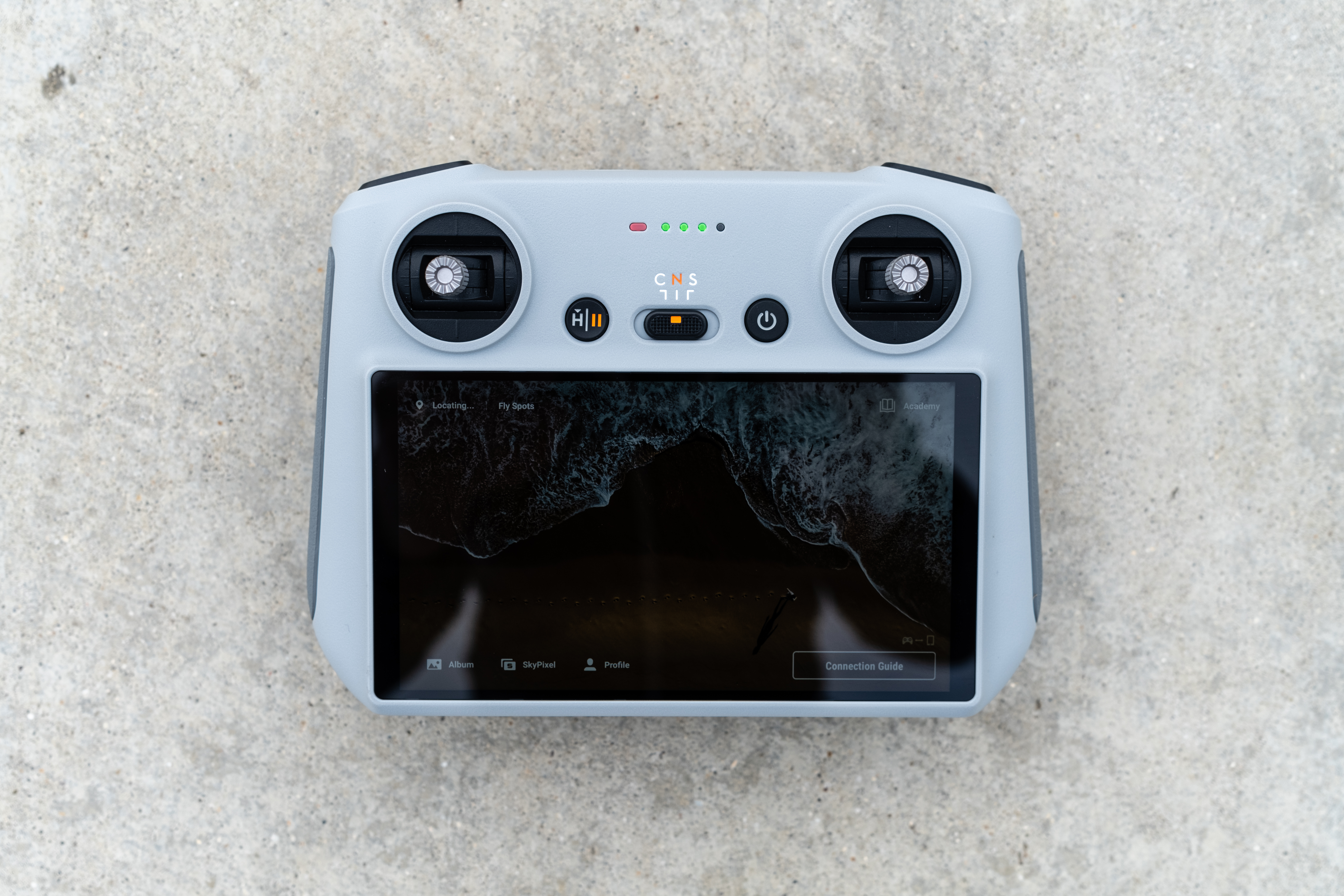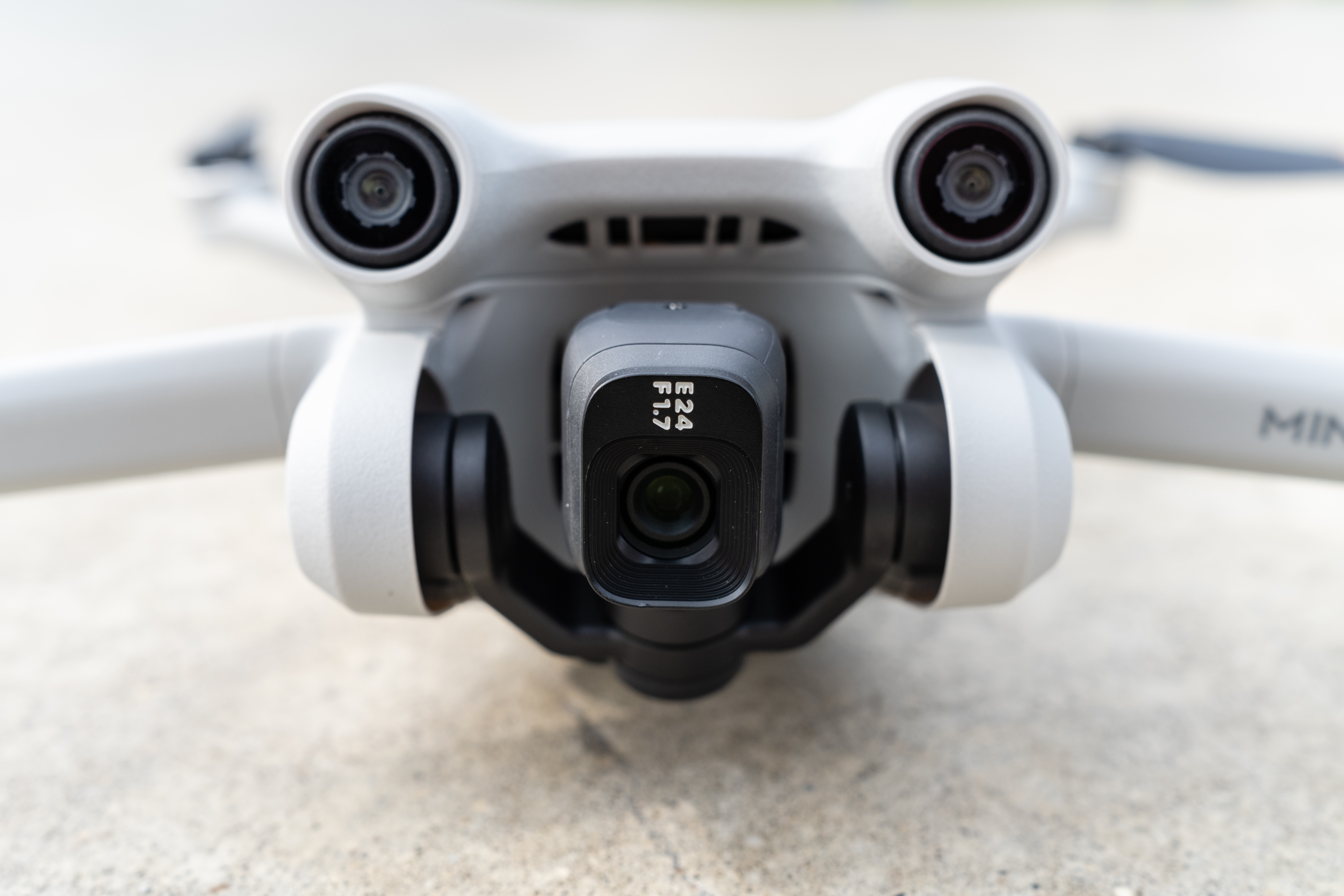I've spent hours flying the DJI Mini 3 Pro – here's why it'll replace my Mavic 2 Pro
Opinion: DJI's little wonder mostly lives up to its 'Pro' billing

Every camera is a compromise, and drones are no different – but after spending hours with the tiny DJI Mini 3 Pro, I'm convinced that it's good enough to finally replace my DJI Mavic 2 Pro. For a professional landscape photographer who likes to travel as light as possible, that's a pretty big deal.
If you missed DJI's launch, the Mini 3 Pro is the closest thing in the drone world to premium compact cameras like Fujifilm X100V, which pack pro features into small form factors. It's a palm-sized drone that fits neatly into the sub-250g category (which has some important knock-on effects), while offering features that have never been seen in the Mini series before.

I sold my DJI Mavic 2 Pro, a much larger drone that weighs just under 1kg, last year in an anticipation of the release of the DJI Mavic 3. I'd been using the Mavic 2 Pro less and less, because of the burden of carrying it alongside my other photographic kit. I was also concerned about how the European Union Aviation Safety Agency (EASA) drone regulations coming into force on January 1 2024 might affect where I could fly it in the future.
But the DJI Mini 3 Pro is the replacement I've been waiting for. The Mavic 3's price, which starts at US$2,199 / £1,879 / AU$3,099, was just too hard to justify. And while I considered the Air 2S, which is undoubtedly one of the best drones you can buy, it just didn’t get me excited. In the Mini 3 Pro, though, I think that I’ve finally found my drone soulmate.
Little wonder
One of the most attractive things about the Mini 3 Pro is that it’s a palm-sized drone that weighs only 249g. Extra batteries weigh just 121g and the new DJI RC controller comes in at 390g, so carrying this drone alongside other photographic kit is going to be far less back-bothering than carrying a Mavic 2 Pro or Mavic 3.
To put this in some context, the Mini 3 Pro and Fly More Bundle with three batteries and an RC controller weighs just 881g. That’s enough battery power for over an hour of flying, and the kit still weighs less than a Mavic 3 without a controller or spare batteries.
As I discovered on my trip to the Dinorwic Slate Quarry in Snowdonia (above), the Mini 3 Pro is very comfortable to carry around. But that doesn’t mean image quality or features have suffered.
Sign up for breaking news, reviews, opinion, top tech deals, and more.
The new 1/1.3-inch 12.1MP sensor is capable of shooting 48MP raw files and JPEGs and offers superb high ISO noise handling with virtually no noise visible even at ISO 6400. The camera can be rotated 90-degrees for portrait shooting, which is fantastic, and the lens offers a 24mm equivalent focal length with a fast f/1.7 aperture, making the drone much better than its predecessors for low-light shooting.

One slight downside of that fast aperture is that ND (Neutral Density) filters are an absolute necessity for getting a correct shutter speed for smooth motion when shooting video in daylight. When it comes to shooting video, it’s possible to capture 4K up to 60fps, 2.7K up to 60fps and FHD up to 120fps with Normal and D-Cinelike colour profiles available.
As you can see, the Mini 3 Pro is a highly capable drone for both photography and video with specs that belie its diminutive size. But its appeal for me isn't just about specs.
Flying start
The advantages of sub-250g drones will vary depending on where you live, as laws vary by region. But as someone who lives under EU drone laws, the Mini 3 Pro's weight class brings a couple of extra bonuses.
In the UK, for example, you can fly the Mini 3 Pro closer than weightier drones to people who are uninvolved in the flight, as long as you hold an A2 CofC (Certificate of Competency) qualification, which can be completed at home. There’s more to it than this, but with sub-250g drones like the Mini Pro 3, you can fly as close as 30m (horizontally) to uninvolved people, albeit without flying over them.

The other potential benefit comes from those EASA regulations. These new laws, which now won't come into effect until January 1 2024, could make flying older drones like the Mavic 2 Pro much more complicated, with a requirement to fly them far away from people and built-up areas.
But because the Mini 3 Pro weighs under 250g, I'd be able to continue flying it in the so-called A1 subcategory from 2024 onwards, even though it lacks one of the new CE Class markings. This makes sub-250g class drones among the most future-proofed in Europe.
Small world
The compact nature of the Mini 3 Pro, alongside its features and image quality, make it a compelling option. But there is another drone that offers similar specs and features – the Autel Evo Nano+.
The Evo Nano+ offers a similar feature set and specs to the Mini 3 Pro. The Nano+ camera features an f/1.9 aperture and a 12.5MP 1/1.28-inch sensor capable of shooting 50MP images and 4K video up to 30fps. Like the Mini 3 Pro, it also offers collision avoidance. These are the two most powerful compact drones currently available.

I'm in the process of testing DJI and Autel's rivals side-by-side, so look out for an in-depth comparison soon. On paper, it's a close call and they're also similarly priced. The standard Autel Evo Nano+ bundle costs $899 / £719, while its equivalent of the DJI's Fly More bundle costs $1049 / £859.
Before these drones arrived, image quality had always been a concern for me with compact models, especially after owning a drone with a 1-inch sensor. But the Mini 3 Pro and Evo Nano+ have changed this, packing advanced features found in larger and more expensive models into travel-friendly form factors.
Crucially, they'll also both slot neatly into my F-stop Anja or Tilopa camera bags. On a typical shoot, I'll usually carry my 16-35mm f/2.8 and 70-200mm f/4 lens, along with some filters. The Mini 3 Pro and its DJI RC controller will easily fit above my bag's ICU (Internal Camera Unit), or within the large ICU in the lens compartments.
Passing the baton
After extensively flying and testing the DJI Mini 3 Pro, I can safely say that it's more than good enough to replace my Mavic 2 Pro. Despite the price increase compared to its predecessor, I think it’s worth every penny for what you get in terms of creative potential.
The ability to shoot 12.1MP and 48MP Raw files, the 90-degree camera rotation to shoot in portrait or landscape format, and the option of shooting 4K video up to 60fps, in Standard or D-Cinelike profiles, is a game-changer for such a small drone.

Despite their enticingly small size and low weight, previous Mini models were unable to pique my interest because the step down from the Mavic 2 Pro was too large. But the Mini 3 Pro fills the gap perfectly. It flies incredibly well, and the creative potential it opens up is truly exciting. The new DJI RC Smart Controller also helps to create a seamless set-up and flying experience.
I’ll likely be putting in my pre-order soon for a Mini 3 Pro with the DJI RC Smart Controller and the Fly More Bundle. The DJI RC doesn’t cost much more than the kit with the standard controller, and the Fly More Bundle is always worthwhile because it saves so much money compared to buying all the useful included accessories separately. A complete drone kit with professional features that weighs less than 900g is a brilliant proposition that I'm looking forward to taking on more trips.

James Abbott is a professional photographer and freelance photography journalist. He contributes articles about photography, cameras and drones to a wide range of magazines and websites where he applies a wealth of experience to testing the latest photographic tech. James is also the author of ‘The Digital Darkroom: The Definitive Guide to Photo Editing’.